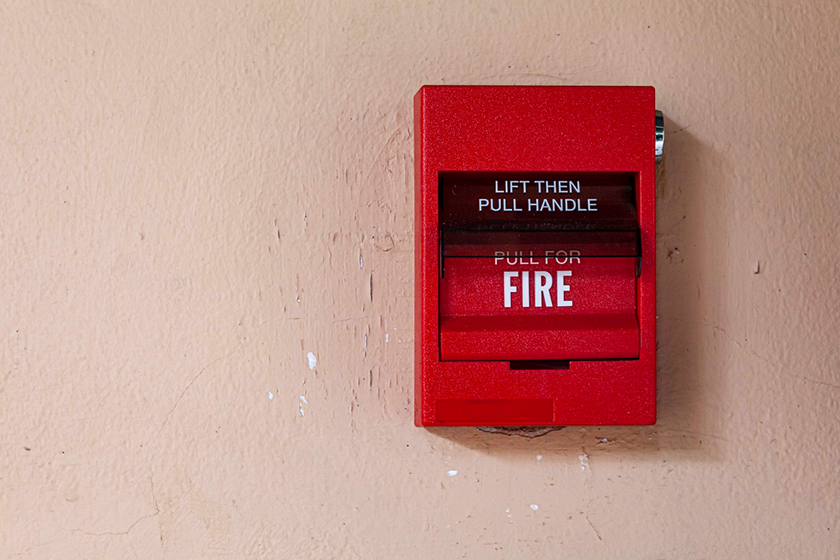Essential Considerations For Effective Fire Alarm System Design

The basis for a strong fire alarm system design lies in carefully addressing a facility’s unique needs while maintaining compliance with safety regulations. Creating a reliable fire alarm system goes beyond installing devices; it involves a strategic approach to design that provides optimal safety and response times.
Whether for industrial complexes, commercial spaces, or residential buildings, knowing what matters most in fire alarm system design is central to safeguarding occupants and minimizing fire risks.
Analyzing Facility Layout and Requirements for Fire Alarm System Design
One of the first steps in fire alarm system design is being familiar with the building layout and specific fire safety needs. Each facility presents unique challenges, such as varying occupancy levels, structural complexities, and environmental factors, which impact the design approach.
High-rise buildings, for example, require systems that support phased evacuation, while sprawling industrial complexes may need customized fire detection and alarm strategies to cover larger areas. By closely analyzing the layout, designers can plan an appropriate configuration of devices and provide complete coverage across all spaces.
Selecting Suitable Fire Detection Devices
Choosing the correct type of fire detection devices is imperative for an effective fire alarm system. From smoke detectors to heat sensors, each device plays a distinct role in detecting potential threats early.
Smoke detectors are versatile and can be used in any number of environments, while heat detectors are more suitable for areas with high temperatures, like kitchens and boiler rooms. Flame detectors, often used in industrial settings, can detect fires even before smoke develops, providing an added layer of security.
Customizing your device selection to each area’s needs helps boost overall system responsiveness, reducing response times during an emergency.
Integrating Reliable Notification Systems
A well-designed fire alarm system must incorporate clear and effective notification systems to alert building occupants swiftly. Visual alarms, like strobe lights, and audio alarms like horns or bells should be strategically placed throughout the facility to reach all individuals, including those with disabilities.
Advanced systems may include voice alarms that provide real-time instructions for safe evacuation, providing additional guidance in large facilities or high-occupancy areas. By making sure that notification systems are accessible and functional in all areas, designers can improve evacuation processes and prevent confusion during an emergency.
Compliance with Local Codes and Standards
Incorporating local fire codes and industry standards into the design process is essential for both functionality and legal compliance. Fire alarm systems must meet the National Fire Protection Association (NFPA) standards and other regulations specific to the location, like New York City’s rigorous fire codes.
Compliance not only sees to it that the system functions effectively but also reduces potential liability issues. Working with professionals well-versed in fire alarm design services means the system will be in keeping with these regulatory requirements, creating a legally compliant and safe environment for occupants.
Power Supply Considerations and Redundancies
Power supply is a major component in fire alarm system design as fire alarms must remain operational even during power outages. Designing a system with reliable primary and secondary power sources, including backup batteries or generators, helps guarantee continuous functionality.
Redundancy planning can include installing backup power sources or integrating uninterruptible power supply (UPS) systems. This redundancy helps to make certain that, even in extreme situations, the fire alarm system remains functional, protecting people and property until emergency services arrive.
Using Modern Technologies for Better Detection
Technological advancements have led to smarter fire alarm systems that provide faster and more accurate detection. Systems with Internet of Things (IoT) capabilities, for example, enable remote monitoring and real-time data analysis, allowing facility managers to monitor the system’s status from any location.
What’s more, smart fire alarm systems can send alerts directly to emergency responders, reducing response times considerably. For facilities looking for complete fire alarm services, including these advanced features can add substantial value by boosting safety measures and facilitating monitoring.
Prioritizing System Maintenance and Testing
Routine maintenance and testing are necessary to verify a fire alarm system’s reliability. Regular inspections help detect potential faults, such as battery issues or damaged wiring, that could impair the system’s performance during an emergency.
Maintenance protocols should be established from the design phase to simplify future testing and repairs. Contracting reliable fire alarm services for ongoing maintenance helps facilities keep systems in peak condition, reducing risks associated with malfunctions or delayed responses.
Optimizing Evacuation Procedures and Emergency Planning
Designing a successful fire alarm system involves planning for efficient evacuation routes. During a fire, occupants must be able to exit the building quickly through designated paths without encountering obstructions.
Fire alarm system designers should work with facility managers to plan and mark clear evacuation routes and use proper emergency exit signage. For facilities requiring extensive emergency management and services, designing systems with customized alarms and automated messages can help guide occupants to safety, reducing the risk of congestion or panic.
Coordination with Sprinkler and Suppression Systems
A fire alarm system often works in tandem with sprinkler and suppression systems to effectively manage a fire incident. Coordinating fire alarm design with suppression systems means that they will activate simultaneously or in sequence, as needed, for maximum efficacy.
By aligning these systems, designers create a cohesive approach that prevents fires from spreading and offers multiple layers of response. This approach is particularly necessary for industrial facilities, where fires can escalate quickly without proper safeguards.
Strategic Placement of Control Panels
Control panels are the central hub for monitoring and managing a fire alarm system. Their placement should allow for easy access by facility managers and emergency responders but remain secure from tampering or accidental damage.
Control panels often include system indicators, allowing managers to quickly identify where alarms have been triggered. Making sure the control panel is both accessible and protected increases response efficiency during a fire, allowing for quick, targeted action.
Fire Alarm Design for Multi-Building Complexes
In multi-building complexes, fire alarm systems require interconnected designs that allow for coordinated alerts across all facilities. Each building should have its individual alarms but remain linked to a central system that can trigger alerts facility-wide.
This setup is imperative in industrial sites, where separate buildings may house any number of materials, and a fire in one area could rapidly affect others. Planning for fire alarm design services across multiple buildings helps prevent delays in emergency response and supports evacuation procedures.
Advantages of Partnering with an EST Partnership
Choosing a company with an EST partnership (Edwards Systems Technology) allows for access to high-quality products and cutting-edge fire alarm technology. EST-certified providers have specialized training in installing and maintaining advanced systems, from intelligent smoke detectors to sophisticated control panels.
For organizations in search of high-performance fire alarm design solutions, an EST partnership offers the added benefit of strong, proven technologies customized to meet complex fire safety needs.
Working with EST partners provides confidence that the system is designed with the latest innovations in mind, guaranteeing reliability and compliance.
Dealing with Environmental Factors in System Design
Environmental conditions like humidity, temperature, and air quality can impact a fire alarm system’s performance. Facilities in areas with high moisture levels, for example, might require specialized enclosures for alarm devices to prevent corrosion or short circuits.
In dusty or industrial environments, alarm components must be selected with durability in mind, so they withstand harsher conditions. Factoring in these conditions is vital for developing a system that functions reliably in any environment.
Incorporating Redundant Communication Channels
Fire alarm systems must have reliable communication channels to alert emergency services in case of a fire. By incorporating redundant communication options, like landlines, cellular networks, or internet-based alerts, the system can make sure messages are transmitted without delay.
Facilities that handle hazardous materials or have high occupancy levels benefit greatly from these redundancies because they provide an added layer of assurance during critical incidents.
More Things to Think About for an Effective Fire Alarm System Design
Besides what’s already discussed here, the integration of fire alarm systems with other building management systems is becoming increasingly important. Modern fire alarm system designs can be interconnected with heating, ventilation, and air conditioning (HVAC) systems, security monitoring, and even lighting control systems.
This kind of integration allows for automated responses in the event of a fire, such as closing dampers in ventilation ducts to prevent smoke spread or unlocking doors for quicker evacuation. Making certain that these systems work together smoothly boosts the overall efficiency of fire response, helping protect both people and property better during emergencies.
Fire Safety Alarms: Your Trusted Partner in Fire Alarm System Design
At Fire Safety Alarms, we bring over 40 years of industry experience and a deep commitment to keeping New York City’s buildings safe. Effective fire alarm system design is imperative for protecting lives and property and we offer a full range of customized services.
Our expertise in local fire codes, coupled with our reputation for reliability, makes us a top choice for businesses and industrial facilities looking for a dependable partner.
Our dedication to customer satisfaction and safety sets us apart. With a full selection of services, including installation, maintenance, and emergency support, we make sure that every system we design and implement meets the highest standards.
If you’re looking for a team that prioritizes your safety and peace of mind, look no further than Fire Safety Alarms. Get in touch with us now.
